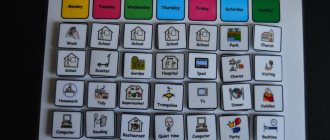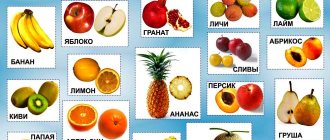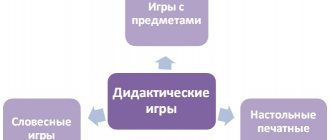A pictogram (from Latin pictus - “drawn” and Greek gramma - “record”, “written sign”) is a drawing-symbol. It depicts some event, object or action .
Pictographs were used even before the advent of writing, for example, in Ancient China and Ancient Egypt.
Nowadays, pictograms are used as signs that facilitate the transfer of information .
For example, as signs on the road or a schematic representation of some other rule, at airports, train stations, in the subway, to indicate functions in computers, etc.
What children need to know about emotions
By the senior preschool age, the child has already formed an idea of human emotions, which include:
- joy
- sadness
- fear
- anger
- resentment
- astonishment
Children define and name psychological states, briefly describe them, and give examples of everyday situations in which a person experiences them.
Pictures for children depicting emotions teach the child to reason, describe cause-and-effect relationships, and analyze his own life experience.
During speech therapy work, it is useful to offer preschool children topics related to people’s experiences to compose narrative stories. For example:
- Is it only humans who have feelings?
- What are positive and negative emotions?
- When am I happy and when am I sad?
Emotions can be divided into pairs with opposite meanings. For example: joy - sadness, disgust - admiration, boredom - interest, etc. Children should be able to recognize and name the feeling of the character in the picture, but also select antonyms for the definition. Exercises in this format allow you to more firmly consolidate the characteristics of emotions.
Children should know that we can learn about a person’s psychological state both from words and by observing actions and behavior. Each emotion has a corresponding dictionary and a set:
- gestures
- facial expressions,
- actions
It is useful to have conversations with older preschoolers about how their emotional state needs to be managed, especially when it comes to negative feelings. You cannot give free rein to anger, irritation, or sadness. Express feelings only in socially acceptable ways. Children will be interested to know that in countries around the world people express feelings in different ways.
System of symbols (pictograms) as a means of non-verbal communication
Natalya Postanogova
System of symbols (pictograms) as a means of non-verbal communication
1slide. Subject
System of symbols ( pictograms )
as
a means of non-verbal communication
Prepared by:
teacher speech therapist
MBDOU d/s 7
Postanogova N. R.
2 slide. In the system of nonverbal communication when developing communication skills in children with disabilities (photos, drawings, printed words) are actively used.
.
These means are designated as visual speech codes, pictograms , as well as gestures, act as substitutes for speech or as an addition to nonverbal communication .
3 slide. The term " pictogram "
is
a general name meaning “representation of what is written
through a drawing . ”
Pictogram principles are widely used in international signs and symbols
As a method of psychological research, the pictogram was first proposed in our country in 1935 by L. S. Vygotsky.
Later, in 1985-1994, the German specialist R. Loeb developed such a system as entering into communication with mentally retarded people who cannot speak.
4 slide. There are various graphic systems - from photographs and children's color pictures to black and white ideograms. Based on the degree of abstraction, a distinction is made between sets of pictures and sets of symbols .
5 slide. The advantage of the pictogram method is that they are multifunctional, they can symbolize specific objects , as well as express abstract concepts. When working with pictograms, much attention is paid to those symbolic images that are often found in a child’s environment.
6 slide. Work on teaching a child non-verbal communication ( symbol system )
can be roughly divided into several stages.
The stage of working with the subject. The child studies the surrounding objective world. Next, he gets acquainted with the symbols and establishes a connection between the real object and its graphic image.
The stage of introducing a communication code. The child develops the skill of transferring symbols to other events , i.e., the possibilities for transmitting information and developing communication .
Slide 7 The stage of grammatical structuring involves learning the ability to answer questions, familiarizing the child with symbols denoting the grammatical categories of gender, number, etc.
Unfortunately, the goal of this stage cannot always be achieved, since the development of speech in children with severe intellectual disability is very difficult.
When the child has accumulated certain ideas about the objective world, then you can begin to introduce him to the sign-symbol .
8 slide. “I speak” notebooks is widely used to work with children with severe forms of speech underdevelopment and various intellectual disabilities.
authors L. B. Baryaeva, E. T. Loginova, L. V. Lopatina.
The manuals pay great attention to working with pictograms , which are often found in the social world around the child.
Slide 9 Getting to know the symbol and clarifying its understanding occurs according to the following scheme.
• Symbol . The time of introducing a new symbol is determined by how much the child has mastered the previous material. During the lesson, the child is introduced to no more than one new symbol .
• Selecting the desired symbol from two .
• Selecting two identical symbols among a number of others
• Selecting the same symbol among a certain number of others
• Compose a phrase using symbols .
10 slide. When studying symbols, you can use the following tasks and exercises.
1. Combining characters into pairs . On the table in front of the teacher there are symbols depicting objects. In front of the child there are symbols that depict actions: play, draw. The teacher takes one of “his”
symbols and shows it to the child. a symbol in his set that matches what the teacher is showing.
11 slide. 2. "Domino"
.
of symbols are laid out on the table in front of the teacher and the child . The teacher says the phrase “The girl draws with a pencil”
and lays out one
character from her set . The child needs to choose from his set and place “draws”
symbol .
Then the teacher places the symbol “pencil
12 slide. “The fourth one is extra”
.
The teacher lays out four symbols , three of which indicate objects belonging to one group, and the fourth to another. It is necessary to find the “extra” symbol .
Slide 13 Symbols are usually divided , for example, into thematic blocks such as: toys; body parts; hygiene and care; food; emotions; family; school supplies; actions; natural phenomena; animals; plants; transport; holidays; cloth; shoes; furniture, etc.
Slide 14 To compile a set of symbols , color or black and white copies of symbols , which are laminated or covered with transparent tape. There is adhesive tape on the back side, with which the symbol can be attached to any surface with the same tape. Children can place symbols on various surfaces: on a work folder, in an album, on separate laminated sheets of cardboard or thick paper (yellow sheets are used for visually impaired children)
.
Slide 15 Finally…
Work on the assimilation and use of pictograms should be carried out in close cooperation with parents, so that outside the educational institution the child can also communicate with the people around him.
Defining emotions for children
For speech therapy work with students in the senior and preparatory groups of kindergarten, use the following list of emotional states:
Joy is a positive emotion familiar to everyone. We feel joy when something good happens. A person can express this feeling through words and actions. Signs of a joyful state are laughter and smiling. Experiencing joy feels good, as does bringing it to others.
Sadness is a feeling that appears when we learn or think about something sad. Sadness cannot be called a strong emotion; it passes quickly. This does not mean that you should not allow yourself to be sad; sometimes every person needs it. But you shouldn’t indulge too much in a sad mood; it’s more useful to try to quickly get rid of it by doing something pleasant or useful.
Anger is anger, strong irritation towards someone or something. Feeling angry is not pleasant, but sometimes it happens to everyone. It is a strong emotion that can cause trouble for us and others. It is important to explain to children how to manage anger and be able to express it correctly. If a person is often angry, then it is difficult for him to find friends, he is often lonely.
Fear is a strong negative emotion that people experience if they are threatened by something. The danger can be real or expected or imaginary. Every child has repeatedly felt fear, so he can easily recognize its image in illustrations or photographs, and also give examples of events, objects and phenomena that cause this feeling in them. Children should know that fear varies in intensity, from fear to horror. It is important to explain to children that this emotion is necessary for a person, as it warns of danger. It can be added that the color black is often used to illustrate fear in pictures.
Admiration is a pleasant emotion that arises when encountering something very beautiful or unusual. Admiration can be caused by: an unusual toy, a garden in bloom, an elegant girl. People, expressing admiration, use special exclamations: (oh, ah, wow, wow) and words (really, amazing, wonderful, wonderful, extraordinary). Admiration can be so strong that it is very difficult to express your feeling in words. From a photograph or drawing, preschool children can easily recognize a person who admires something, although it is difficult for them to describe his feelings; this requires special speech therapy training.
Shame is an unpleasant feeling that occurs when we have done something bad and regret it. The older the children, the easier it is to explain to them the essence and meaning of this emotional state. Signs of shame are not only certain facial expressions, but also redness of certain parts of the face (cheeks, ears, neck). Knowing this feature will help preschoolers quickly and easily recognize shame in drawings (by the way, this sign can often be seen in story pictures for children and even in selfies) and in the behavior of people around them. You can have a conversation with children 6-7 years old about the difference between shame and shyness; these states are easy to confuse.
Resentment - a person feels resentment when someone’s action seems unfair to him. Some people are touchy, others rarely experience this emotion. It is difficult to describe the state of resentment; preschool children should be able to recognize its image. To do this, you can use both schematic images (for example, emoticons - simple pictures of emotions for children), and realistic drawings, color or black and white photographs. By the way, it is convenient to print such visual material from collections and presentations on specialized speech therapy websites.
Basic properties of pictographic writing
Pictography has its own characteristics that distinguish it from other types of writing. These include:
- public availability. Pictographic writing is presented graphically and expresses the meaning of a statement. Therefore, the pictograms are understandable to people speaking different languages;
- lack of phonetic and grammatical connection with a specific language. The pictogram can be described in your own words and in different languages. Unlike a letter, it cannot be a linguistic unit;
- a related connection with the nonverbal communication system, but not equal to it. “Sign language” at a certain point became the link between pictography and ideography. The visual sign, taking the form of an abstract concept, becomes the driving force for the emergence of a graphic image of the abstract concept.
Writing skills in children
Overcoming and preventing writing and reading – logo games
Psychophysiological structure of writing and the prerequisites for its formation
Errors in writing - consequences of dysorthography?
How did people “start talking”?
Related posts:
- The psychophysiological structure of writing and the prerequisites for its formation Written speech is the structure of writing and the prerequisites for the formation of writing skills….
- What is "War and Peace" about? Summary of the novel “War and Peace” by chapters. All answers...
- Calligraphic handwriting is the key to competent writing. Developing calligraphic handwriting is the dream of many schoolchildren. But not everyone...
- History, signs and symptoms of dysgraphia Symptoms of dysgraphia in children and methods of overcoming it depend on ...
Drawn pictures
Emotions in pictures for children, used for classes on speech development, are presented in several versions: images of adults and children, people or fairy-tale characters. Printed pictures and drawings created by children are suitable for the development of speech in preschoolers.
Invite the children to draw themselves or another person experiencing a certain feeling. Drawing up a verbal explanation for such a picture is a speech therapy exercise that the children do willingly.
If children are not yet able to cope with independent depictions of emotional states, it is worth inviting them to create a collage from pre-prepared and printed facial details. Preschoolers aged 6-7 years are able to recreate emotions on paper on their own, but for younger children it is worth using ready-made templates and samples.
In speech therapy work, you can use not only drawing, but also coloring. Thematic coloring books are a useful and exciting material that is indispensable for girls and boys in kindergarten and at home.
It is important to first thoroughly study with children not only the names of different emotions, but also those artistic techniques that allow you to accurately convey one or another psychological state of a person. The use of pictograms can be very helpful in this regard.
History of pictography
Pictography is the oldest writing system, which is a collection of images (pictograms). It became the initial stage of the emergence and development of writing.
The first pictograms appeared around the 8th-6th millennia BC. This is a time when there were no letters yet. But people already needed to transmit information to each other through communication at a distance. They left drawings on the walls of their homes, stones, and wood.
This is how the thoughts of primitive individuals were transmitted: their emotions, wishes, fears, warnings.
Thus, they left information about themselves to their descendants. With the help of pictograms, ancient peoples wrote messages about hunting, fighting, love, spells, and left inscriptions on tombstones.
Over time, the number of graphic images became more and more difficult to use. There was a need for canonization of written speech. Then pictographic writing smoothly turned into ideographic writing.
In ideography there are fewer means of expression, but they have a wider application.
Certain objects or phenomena were depicted in the form of several ideograms, each of which could be used for different descriptions. For example, light was represented in the form of images of the sun and moon.
Further, it was necessary to further simplify the writing system, reduce the number of units of written speech and specify the essence of the messages.
It became important to convey all the subtleties of the author’s thoughts to the reader. Syllabic and letter writing systems were gradually formed.
In the 2nd – 1st millennia BC. e. The first alphabet (Phoenician) appeared.
However, there are examples of peoples who still use a pictographic writing system. For example, the Nesi people living in the foothills of Tibet.
Pictograms
Schematic representations of various emotions greatly help children in learning, remembering and recognizing human emotional states. Especially in the early stages of getting to know this topic. Various sets of “Emotions emoticons pictures for children” contain cards with a conventional image of anger, joy and other feelings.
Games with pictograms
Games with pictograms are a whole area in the work of speech therapists and psychologists. Schematic images of emotions (faces) are excellent material for stimulating a child’s speech activity. Here are some examples of using such images:
Pick and name
Prepare pictures of pictograms with different emotions and feelings for children. The task is to find out this or that state, give it a name, and then come up with a situation in which it would be appropriate. Children can use both their personal experience and remember the heroes of famous fairy tales and cartoons. It’s okay if at first the descriptions of emotions sound childish, gradually regular speech training will help these stories become more perfect.
Find a match
If you take a cut set of emoticon pictures and mix them up, you will get an exciting game for a team of preschoolers, which can also be used in speech development classes. The task is to collect all the images. It is important that each emoticon accurately expresses a particular feeling, then the emotion will be easier to recognize and describe.
Transformations of moods
For this game you need to select the following emoticons, pictures of emotions for children, which can be sorted into opposite pairs. For example, sadness-joy, admiration-disgust, etc. Ask the children to take one card or a round smiley face, and then match the selected picture with a pair. After this, you can invite the children to come up with a story about what could turn one emotion into another.
Koloboks
The image of a kolobok is similar to a smiley face, so also use pictures with this character as pictograms illustrating emotions.
Use Kolobok’s drawings on a transparent background, so it’s easier for children to analyze the psychological state of the hero, and not the plot twists that happen to him.
There are many options for games with this fairy-tale character. For example, tell a Russian fairy tale, describing the emotions of Kolobok and other characters. The use of puppet theater or masks will help make this activity productive.
Emotions in the country of Smeshariya
Toys from the cartoon Smeshariki - material for classes on speech development in preschool educational institutions and at home. Images of funny round characters can be used to illustrate emotional states. Buy a ready-made manual or make it yourself, cutting out and signing characters from a magazine or book.
Offer the children pictures of Smeshariki and ask them to name the feeling that Nyusha, Kar-Karych, Krosh and other characters experience.
Pictograms in the modern world
Despite the emergence of alphabets, pictograms still do not lose their relevance. True, now they play a secondary role and are not considered the primary means of written communication.
The relevance of their use in the modern world is explained by their universality: pictographic signs are easily recognized by all people, regardless of their nationality and language.
In addition, the written expression of thoughts in the form of words and sentences is not always appropriate.
Sometimes, for easier perception of information and quicker reaction of people to it, it is more convenient to use symbols of something in the form of images. It is important that pictograms should be recognizable and understandable to everyone. Then their use in a given situation will be appropriate.
Today pictograms are used in the following areas:
- regulation of road traffic: a set of road signs;
- computer technologies: all kinds of interface shortcuts, designations of sites, programs;
- increased emotionality in written speech: emoticons in SMS and Internet messages, reviews, comments;
- international relations: Olympic symbols, designations of sports at international competitions, conference emblems, images of state emblems and flags;
- designations of public places: toilets, cafeterias, hospitals.
Pictograms are necessary for modern society: they make people’s lives easier and save their time.







